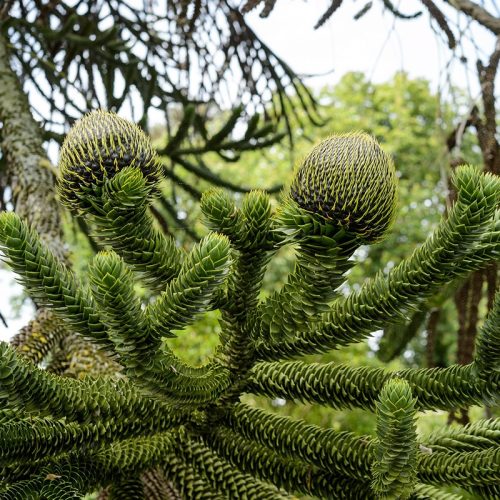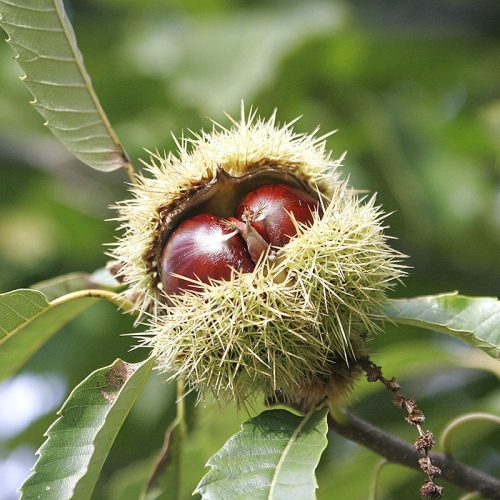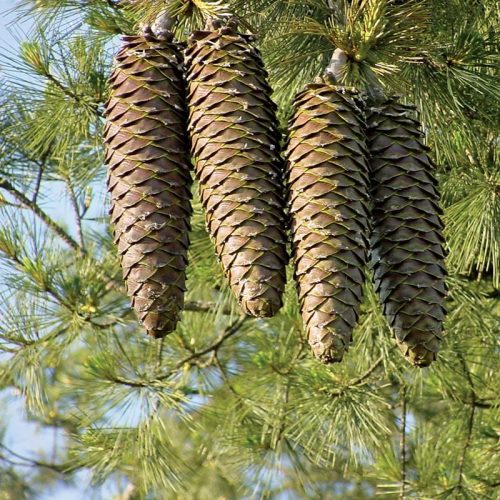Description
All trees will be 60-100cm+, single stem with some lateral branching.
Cobnut trees will grow in most well drained soils, and once established will live for many years. The commercial cultivation of cobnuts dates back to the 1600s in England and France. Commercial production of hazels/cobnuts continues to this day in China, the United States, Turkey and a number of European countries. On fertile ground, yields of 1.5-3 tonne per hectare are achievable. It’s necessary to plant more than one variety of cobnut in order to achieve good pollination. The Irish hazel may also work as a pollinator.
We use the word ‘cobnut’ to cover all cultivated varieties of the hazelnut (including filberts). Please note that cobnuts are not self fertile, for success plant two or more different varieties. This will ensure good pollination.
Cultivars Available:
Nottingham
U.K variety, also known as Pearson’s prolific. Medium to large nuts, good flavour, moderately strong grower. Storage ability good. Very reliable cropper, cropping from a very young age. One of the best choices for Irish conditions. Male flowers: mid-season. Female flowers: mid-season. Good pollinator for other varieties.
Webb’s Prize
UK variety. Medium to large nuts, excellent flavour, relatively weak grower producing compact trees, good where space is limited. Less prone to wind damage. Storage ability good. Very reliable cropper, one of the best choices for Irish conditions. Frequently produces rooted suckers, good for propagation. Male flowers: mid-season. Female flowers: mid-season. Good pollinator for other varieties.
Cosford
UK variety. Medium to large nuts. Moderate to good flavour, strong grower. Storage ability fair. Reliable cropper but yields can be low. Male flowers: mid-late season. Female flowers: mid-late season. Very good pollinator.
Kentish Cob
Main variety grown in UK though French or Spanish in origin. Medium sized nuts, excellent flavour, moderate grower. Storage ability poor; used exclusively for the fresh nut market. Cropping ability in Ireland variable, best on a warm site. Male flowers: early-mid season. Female flowers: mid season.
EMOA1
Recent Dutch cultivar producing well in trials in UK and Netherlands. Good yields of large nuts. EMOA1 are larger trees 4yr old apporx 2m
Hall’s Giant
Originally from Germany. Also popular in France (where it is called ‘Merveille de Bollwiller’) Large nuts, good flavour (very sweet), very strong grower. Storage ability good. Reliable cropper, good yields. A good choice for Irish conditions. Not always popular because of its very vigorous growth and thick-shelled nuts. Male flowers: mid-late season. Female flowers: late (needs a late flowering male for pollination)
Butler
Butler produces a large crop of hazlenuts with a good texture and strong flavour. Can be used for both cooking and eating straight from the tree.
Catalan
Catalan Hazels are extremely tasty and resemble almonds in taste. They are large, slightly oval with medium softness and a moderately thick nutshell.
Red Hazel
Red Hazel has a vigorous strong growth producing medium-sized, slightly sweet nuts. Frost resistant and their pollen is often the first food for waking bees.
Louis Berger
Louis Berger is a mid season, large, long tapering nut with a good flavour. High upright growing tree.
Hallesche Riesen
Hallesche Reisen is a hardy, strong growing deciduous hazel tree. A high yielding variety producing sweet nuts.
Barcelona
Barcelona is a vigorous tree producing big bumper crops of delicious fruits. Suitable for eating, cooking and roasting




